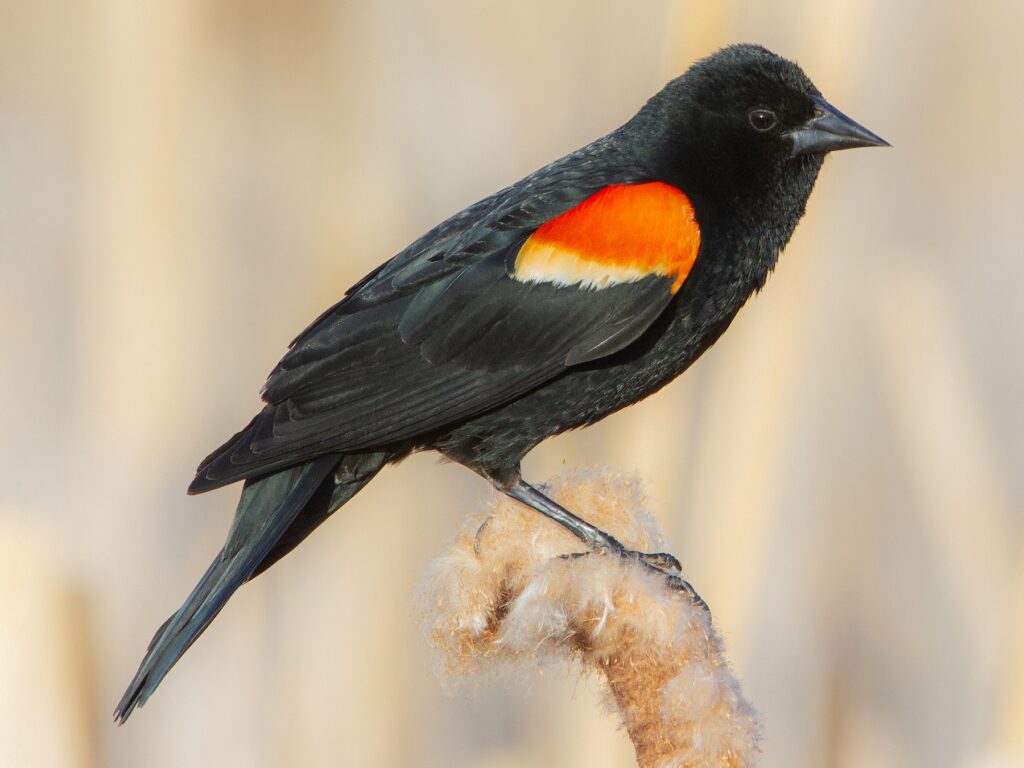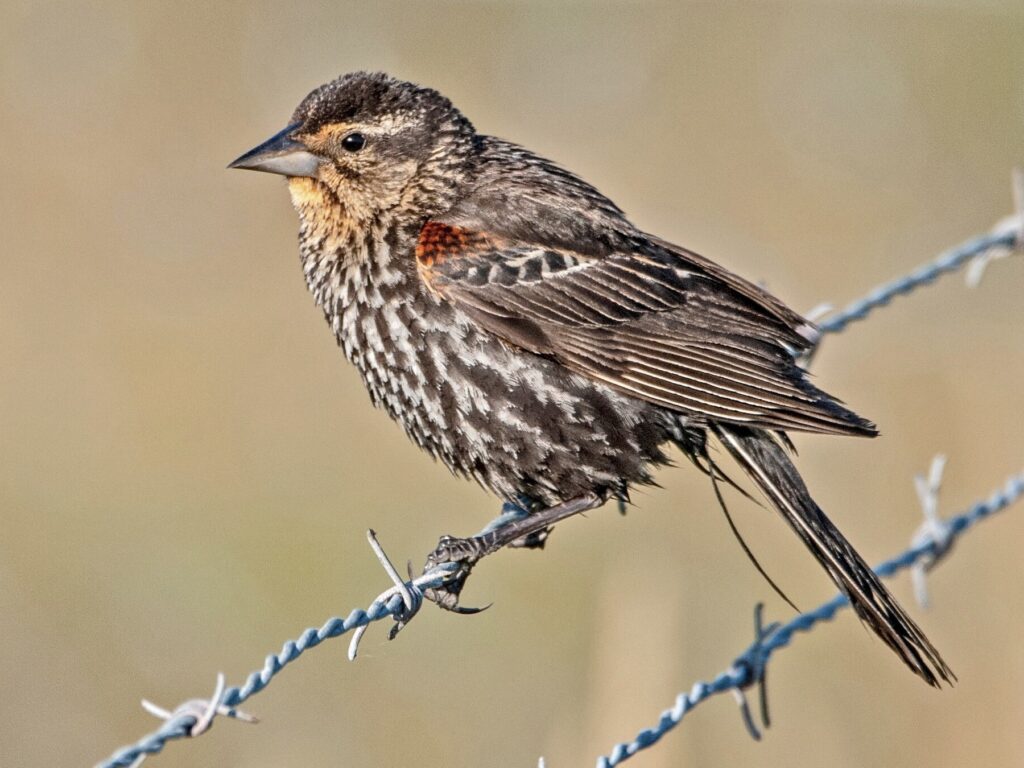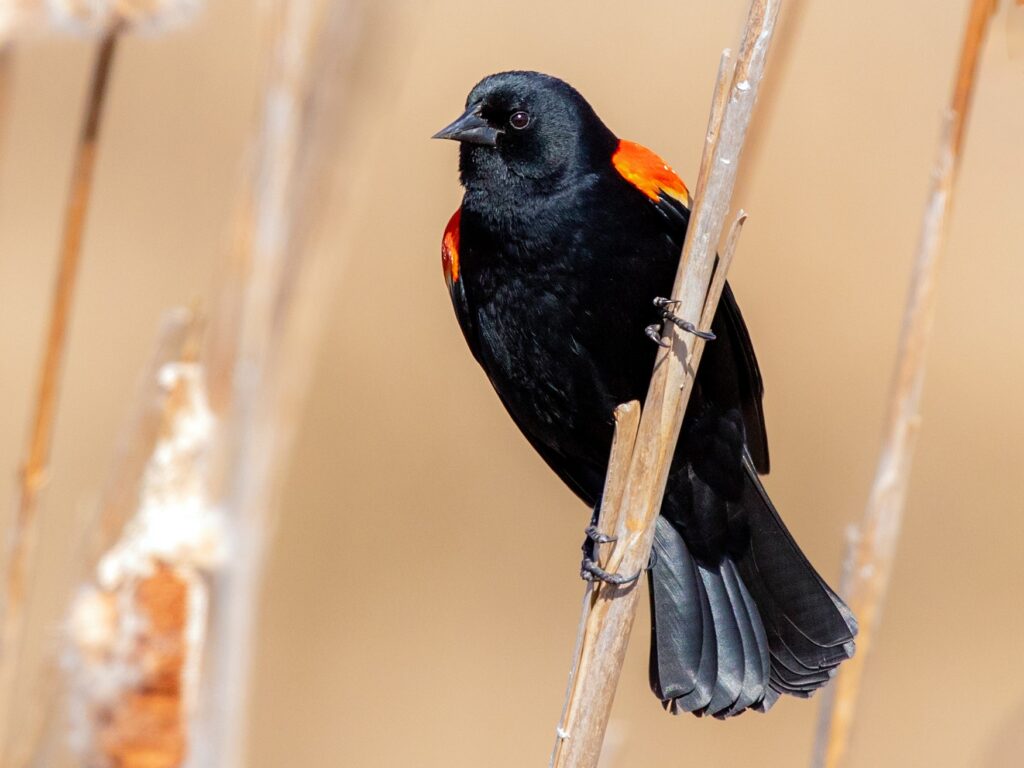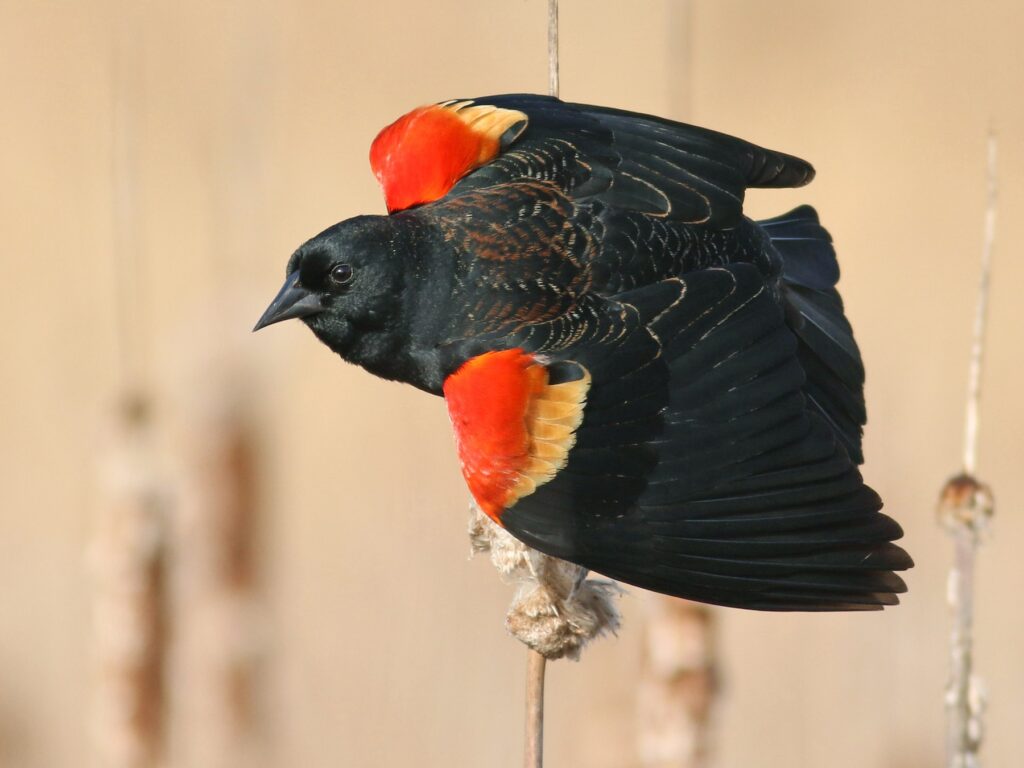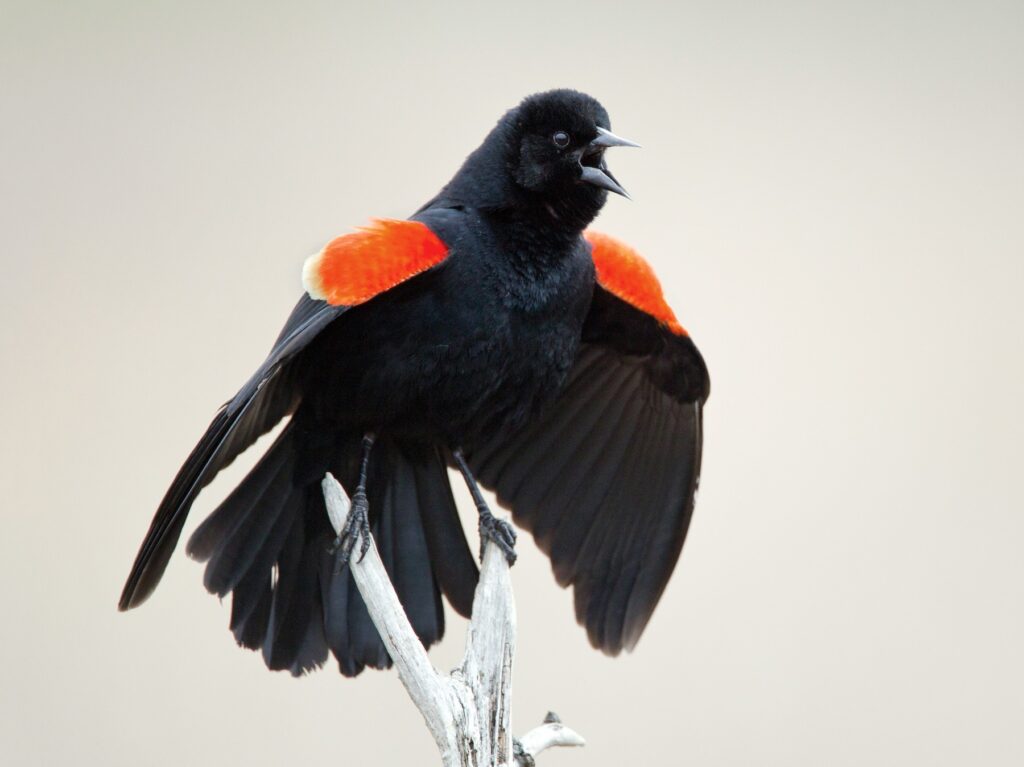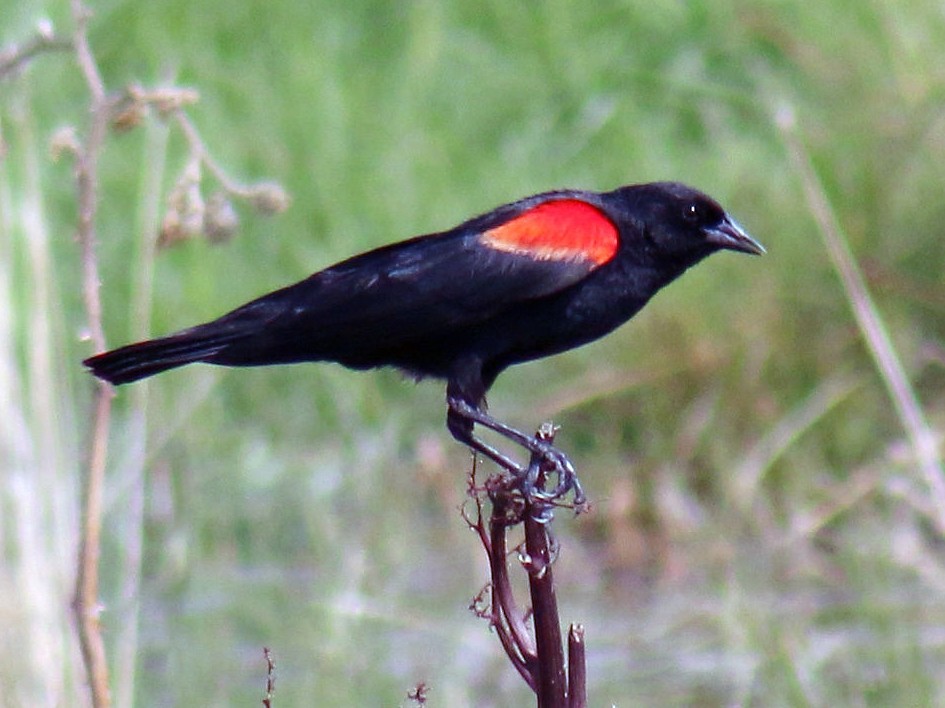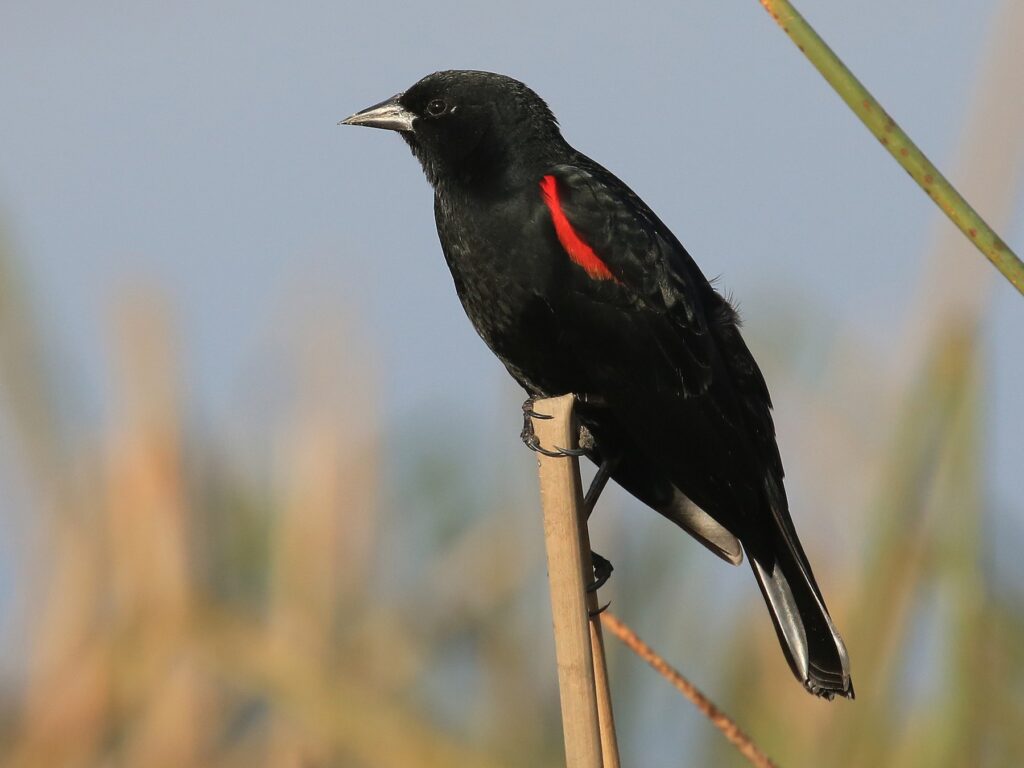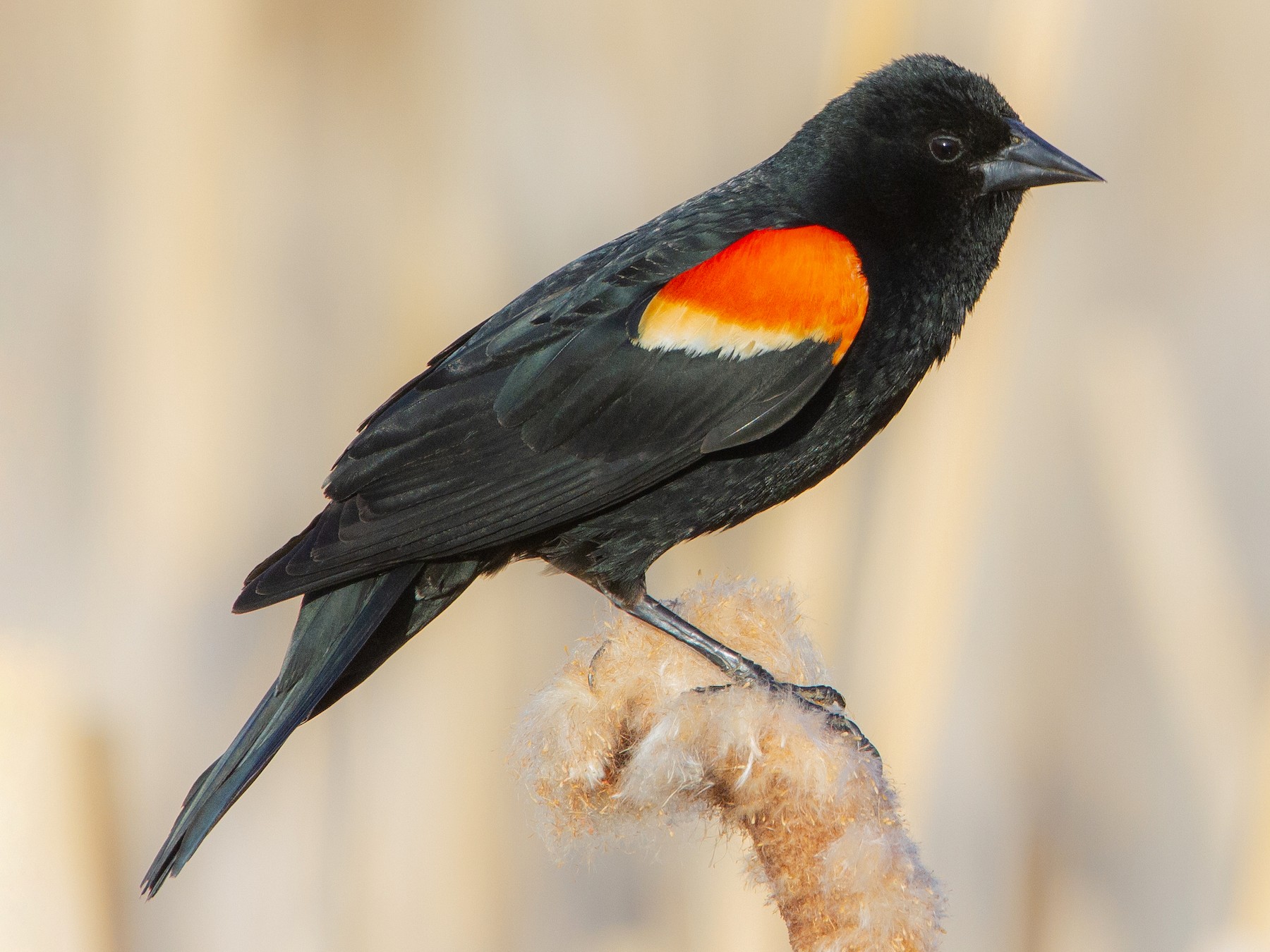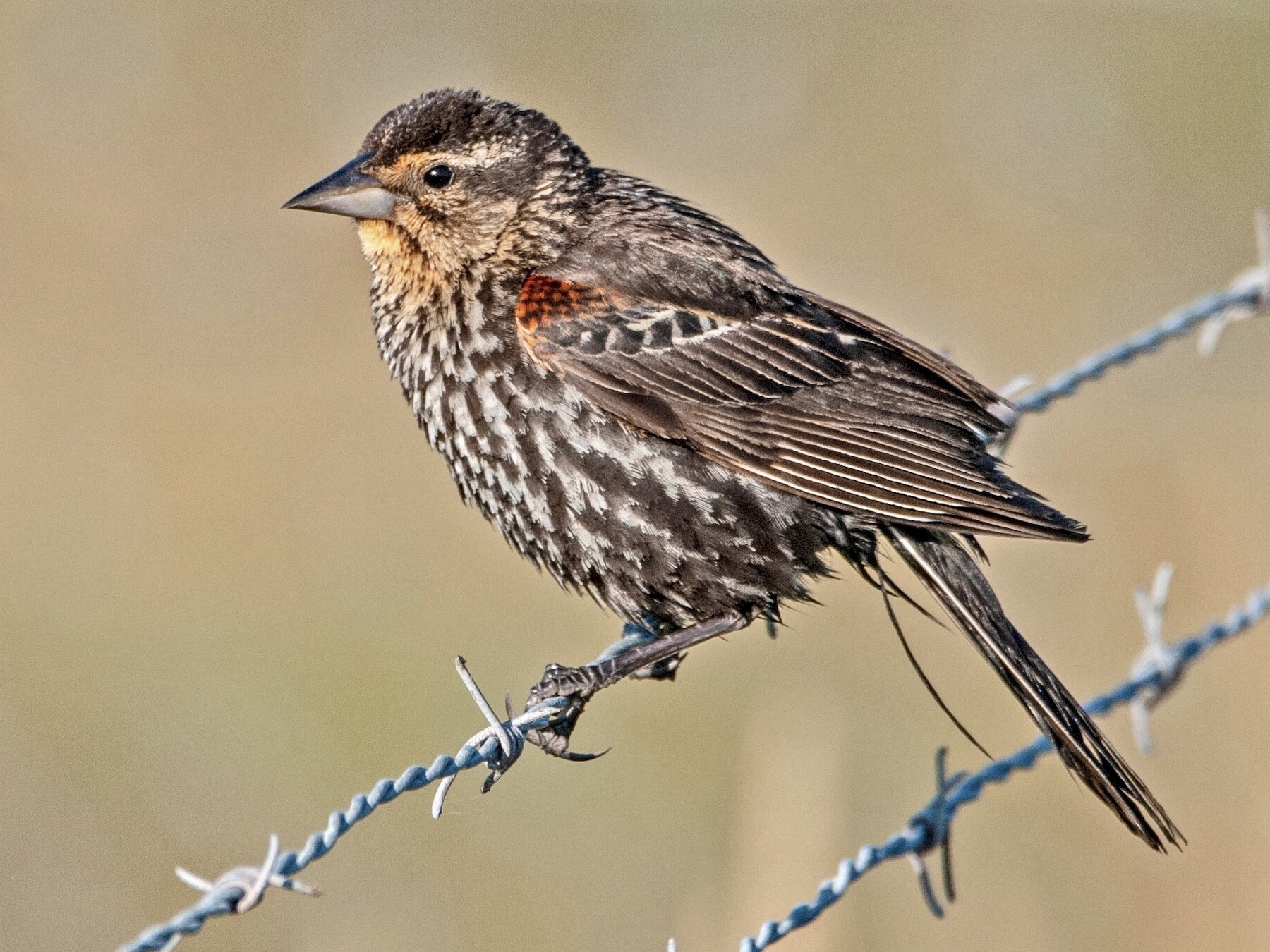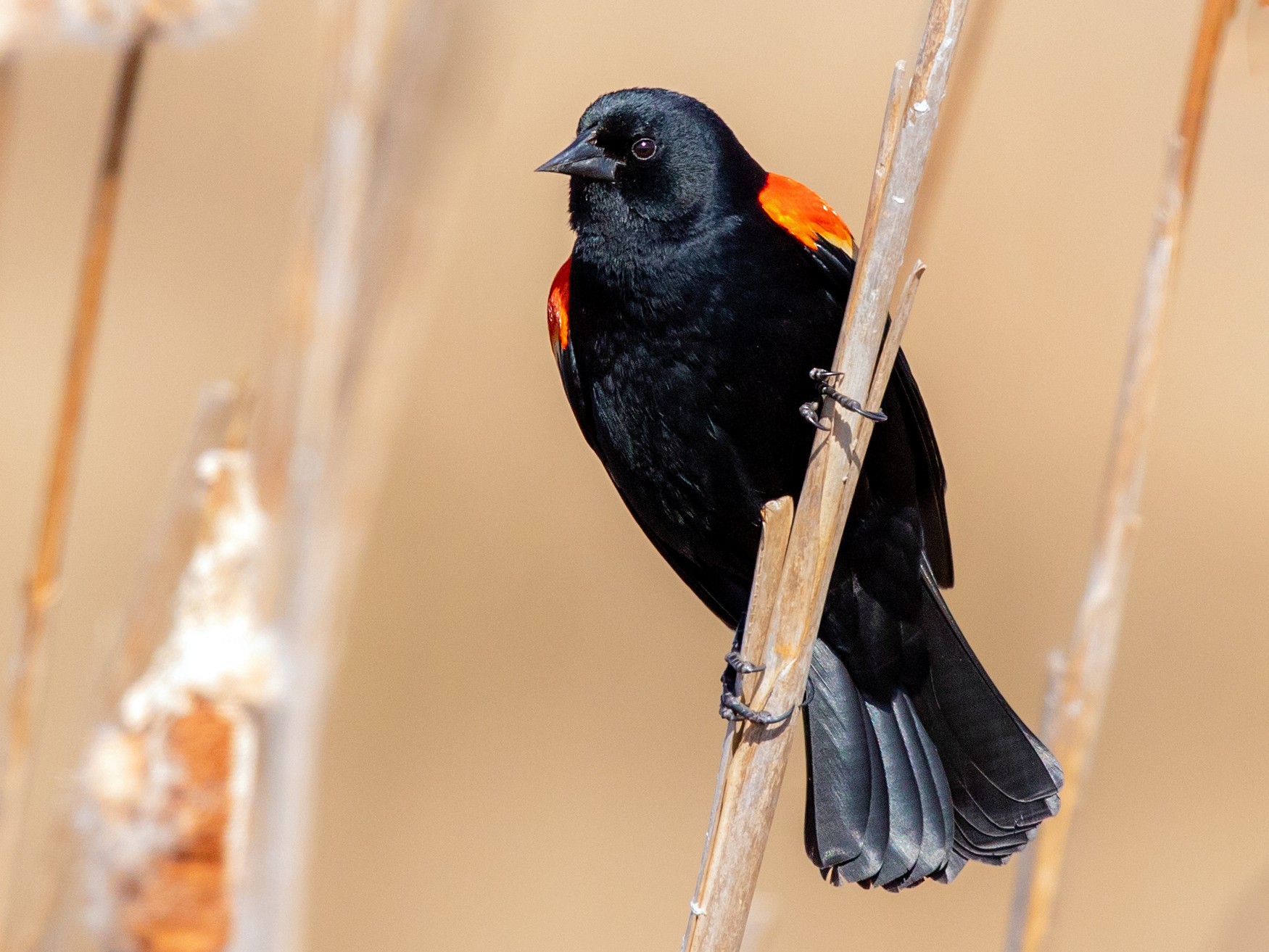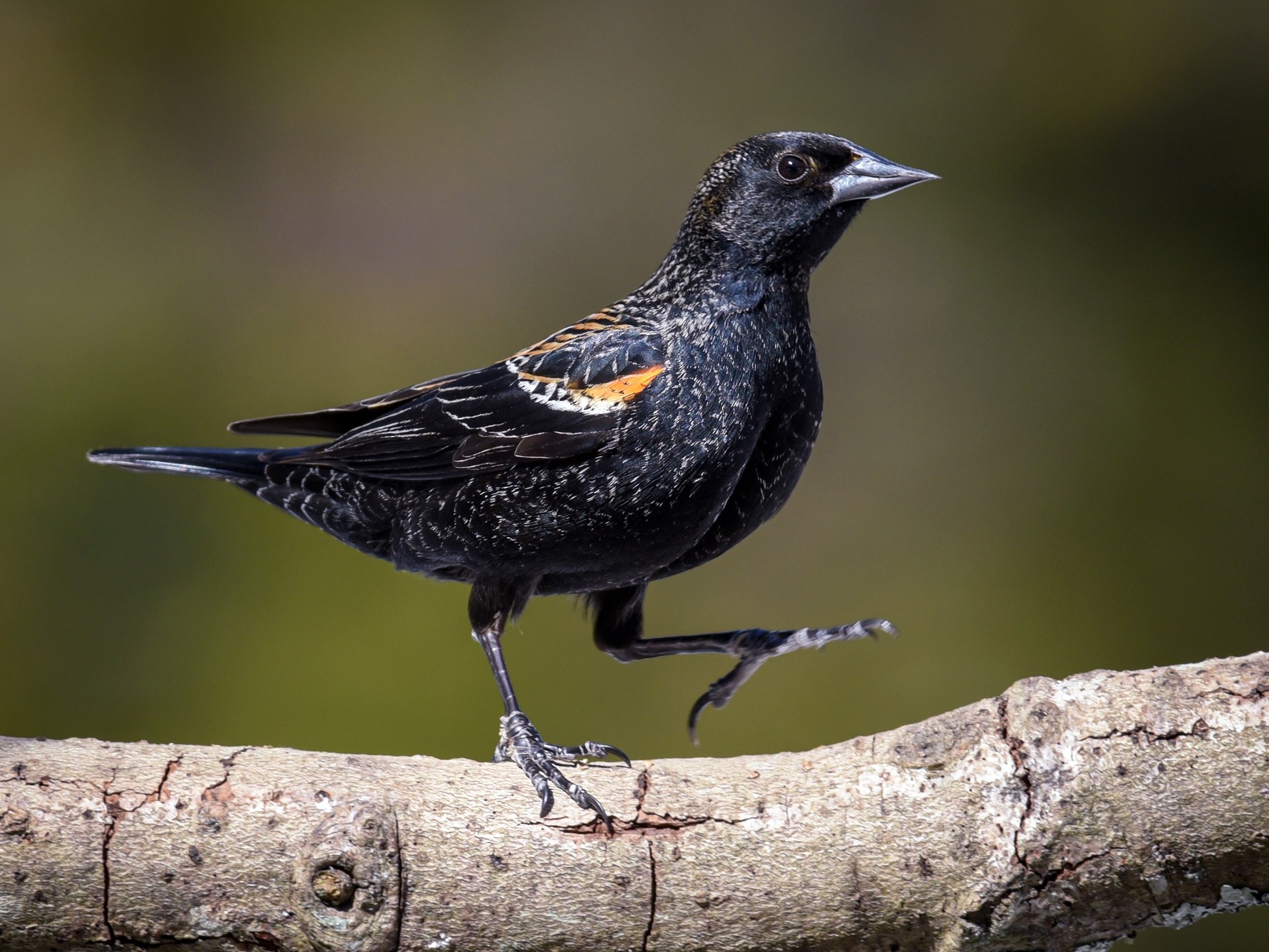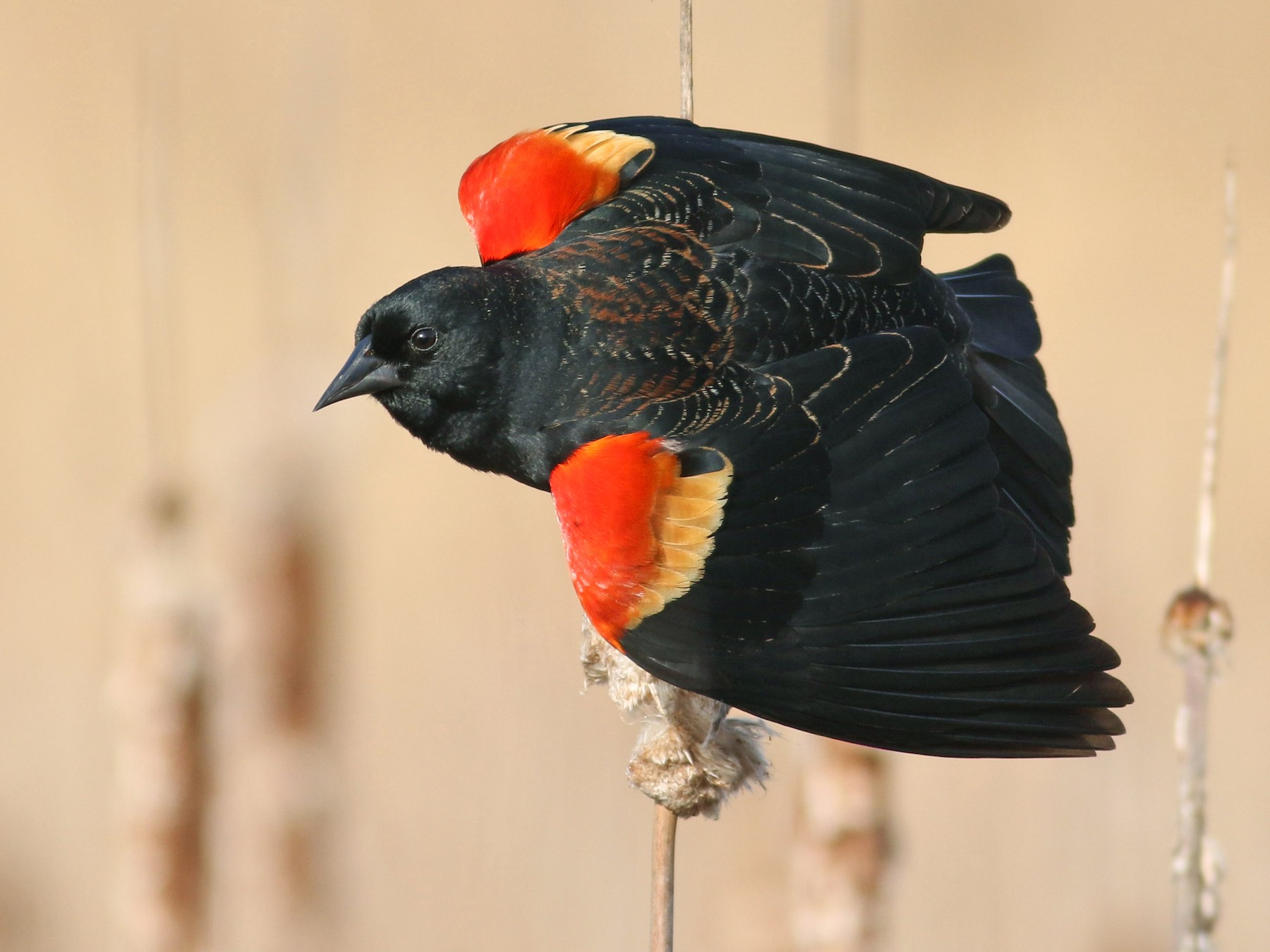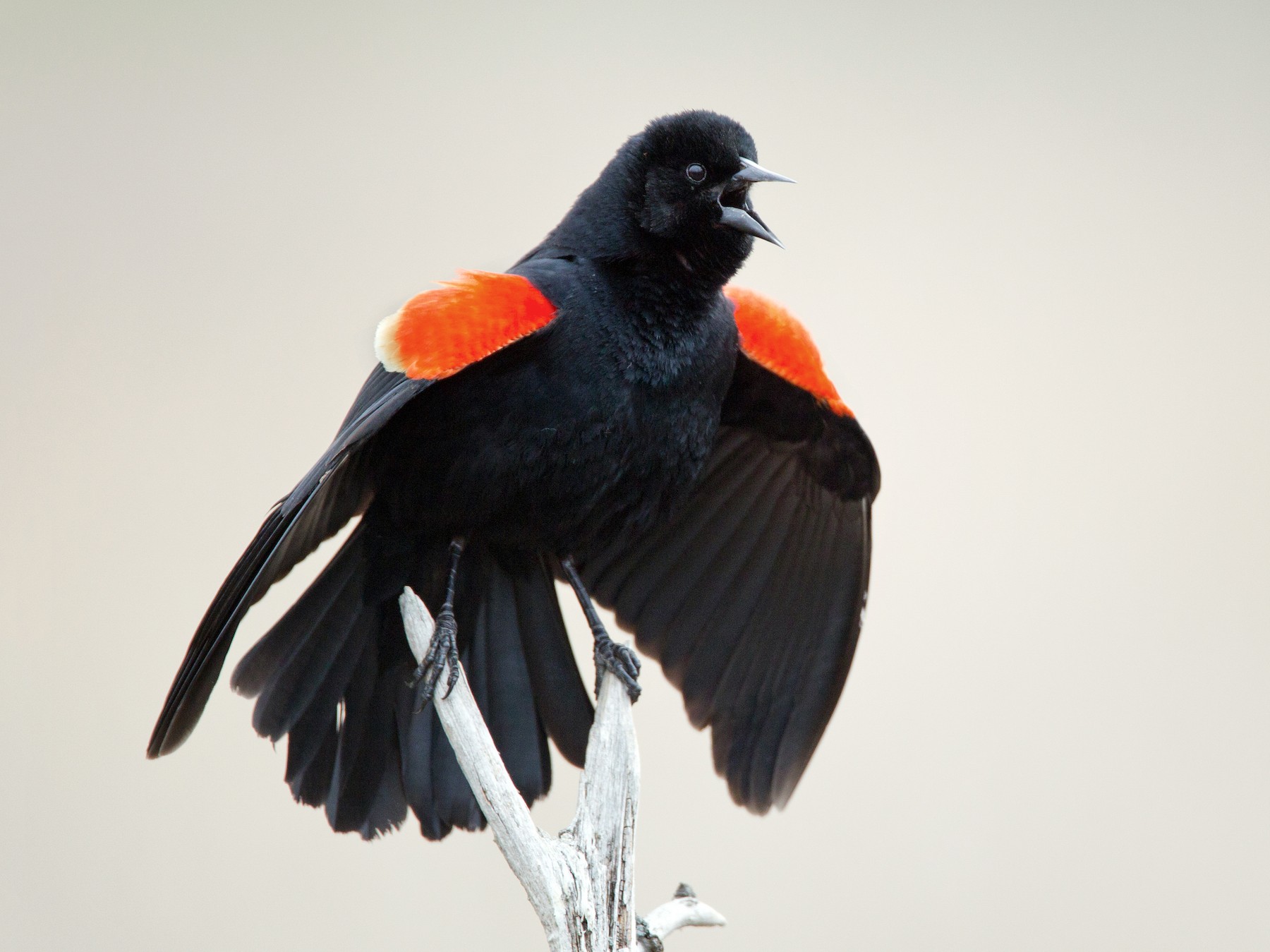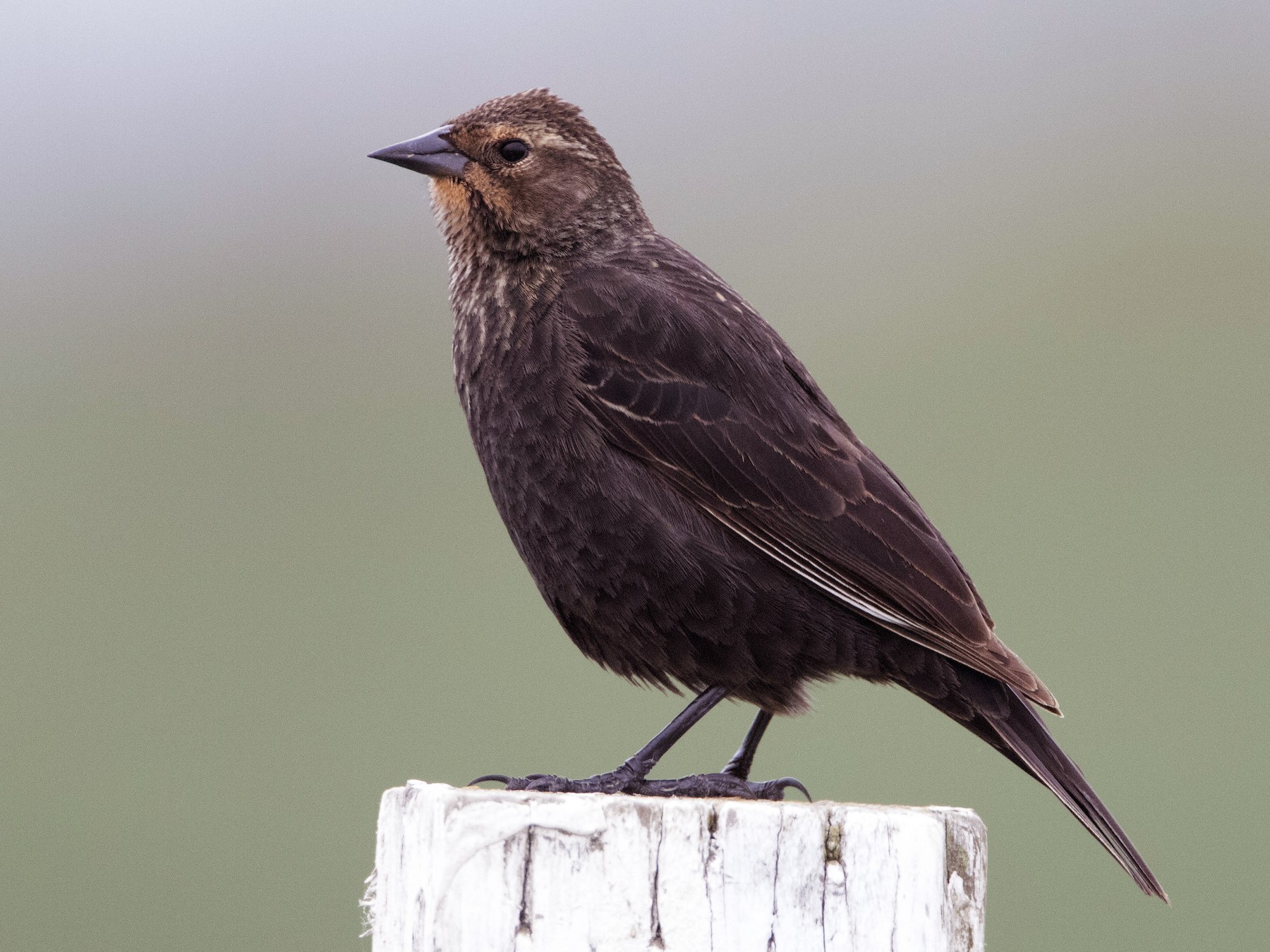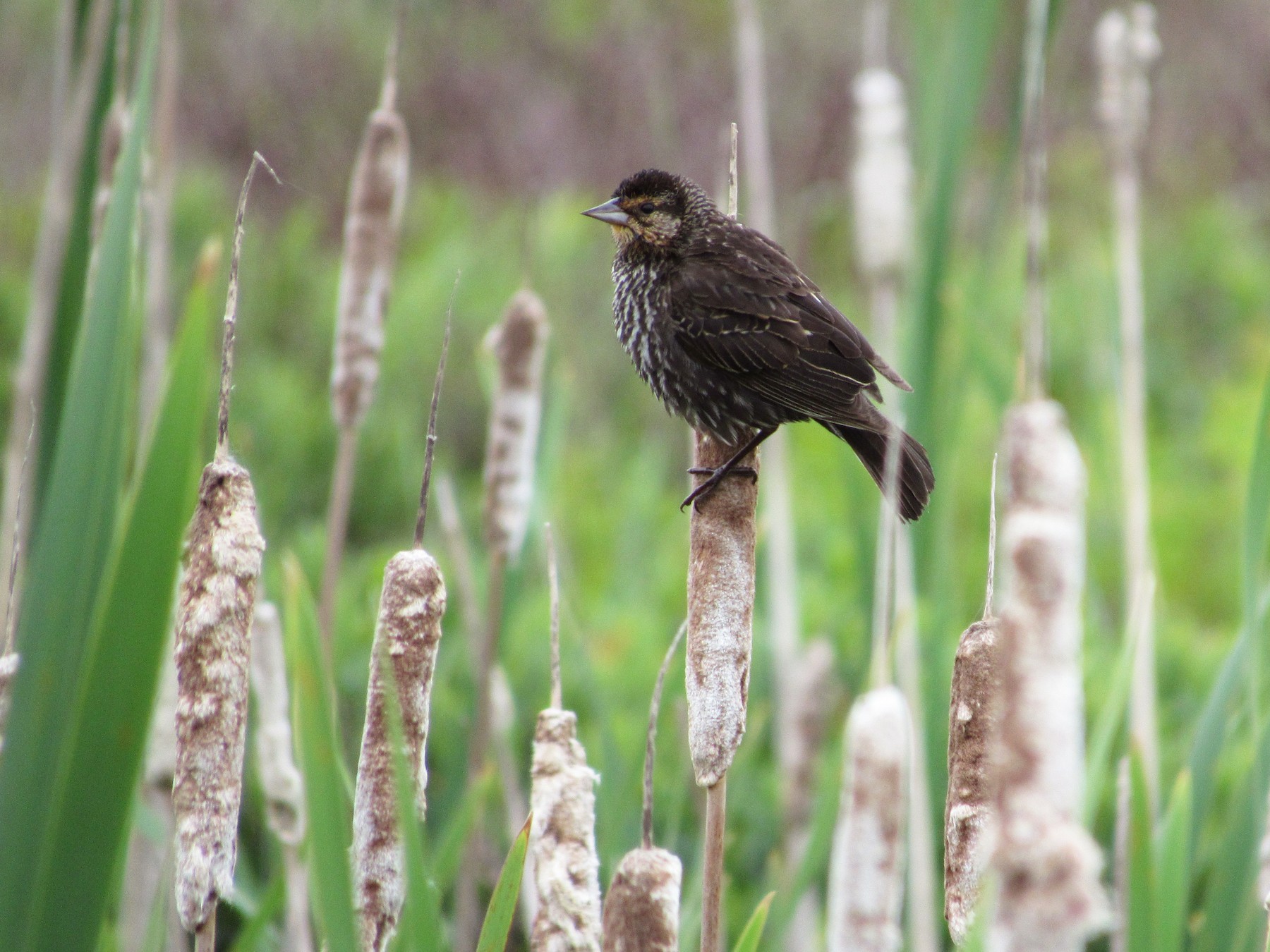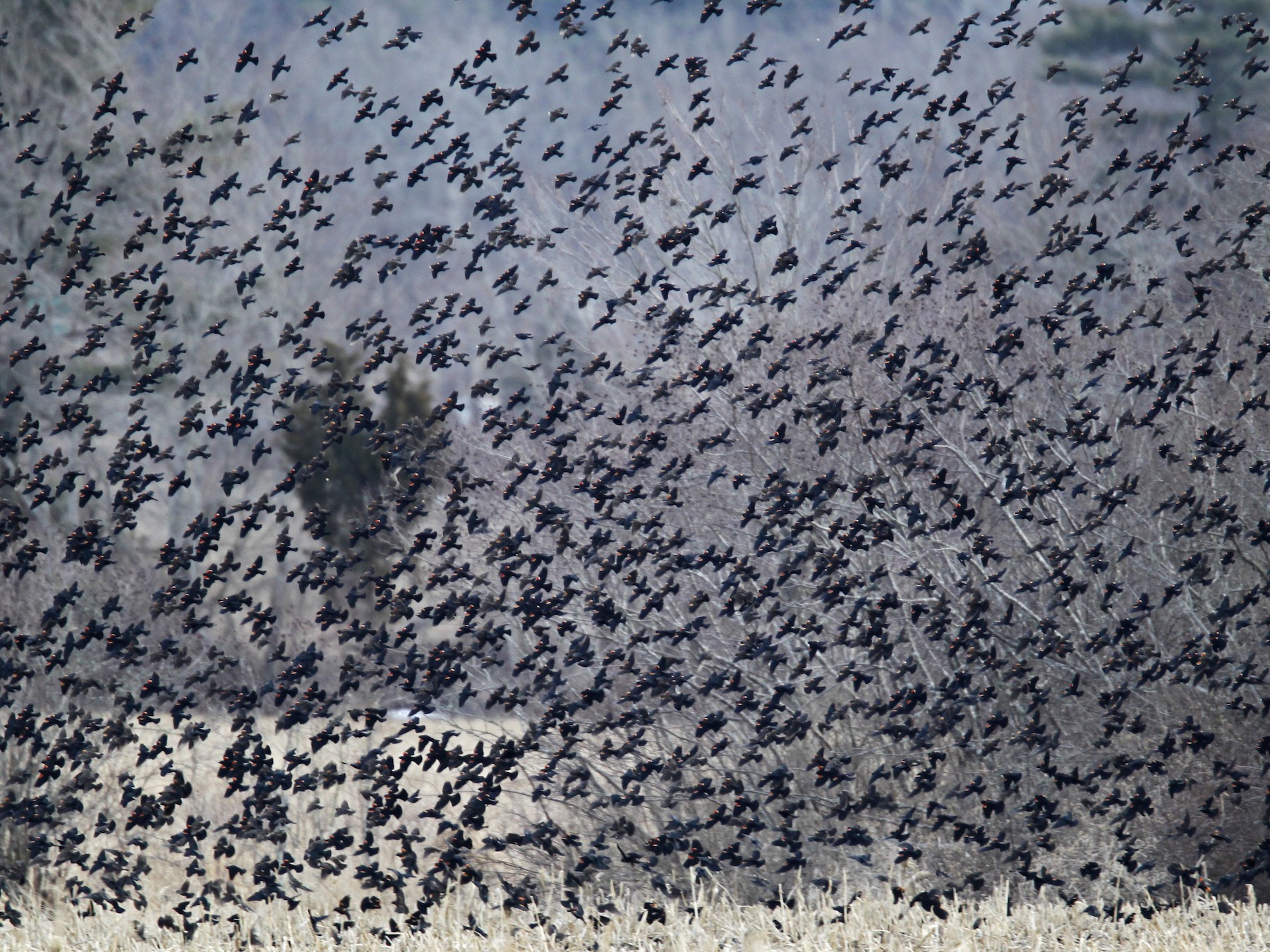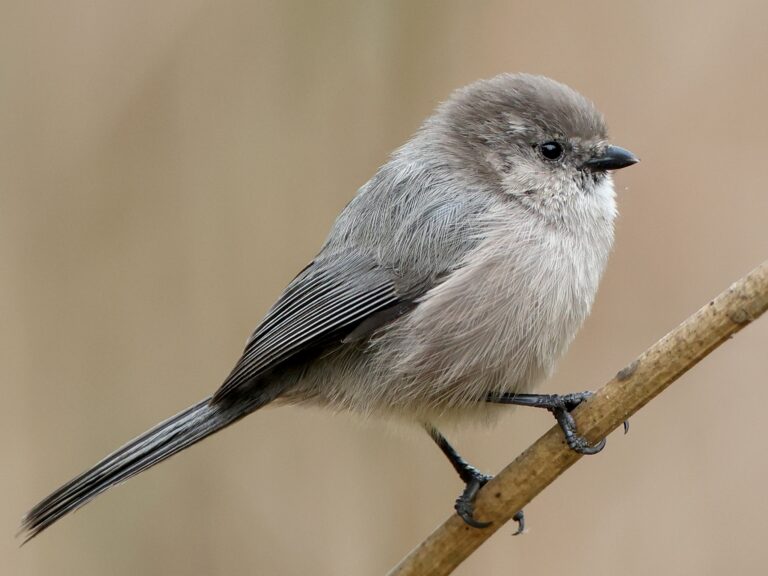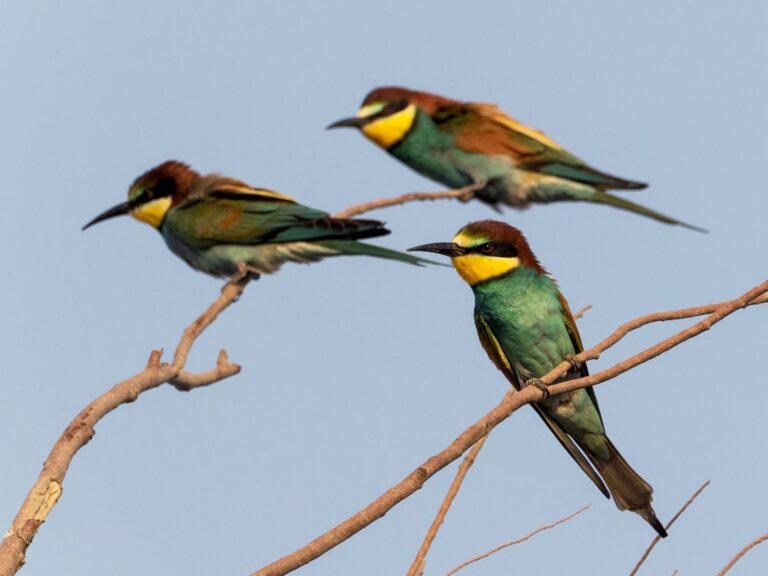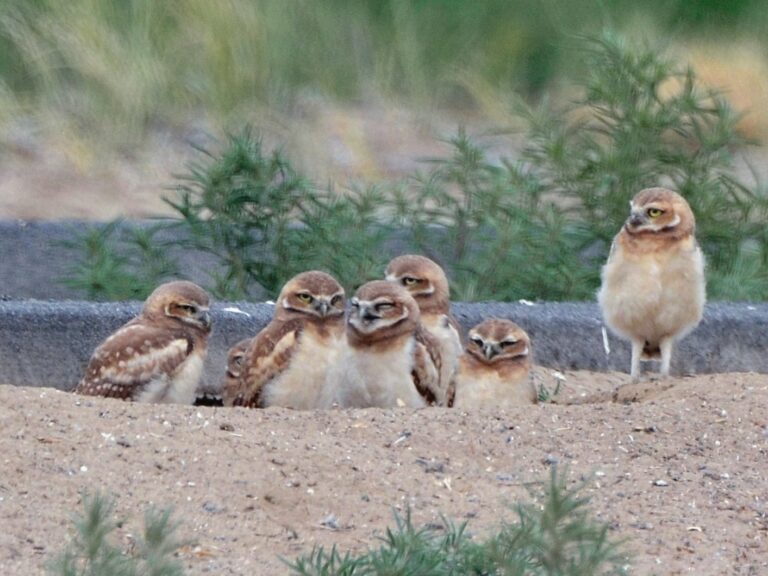Red-winged Blackbird: Master of Marshes and Icon of North America’s Wetlands
The Red-winged Blackbird is a striking bird known for its vibrant colors and distinctive calls. This bird plays a vital role in its ecosystem, helping to control insect populations and contributing to the health of wetlands.
Many people encounter these birds in marshes and open fields, where their songs fill the air, especially during the breeding season. In addition to their beautiful appearance, Red-winged Blackbirds are interesting to observe due to their complex social behaviors.
Male Red-wings are known for their territorial displays, defending their nesting areas from rivals and other species. Their intriguing nesting habits and diverse diet make them a fascinating subject for birdwatchers and nature enthusiasts alike.
Key Takeaways
- Red-winged Blackbirds are important for controlling insect populations.
- They have complex social structures and unique breeding behaviors.
- These birds have a diverse diet, contributing to their role in the ecosystem.
Sign Up for Our Monthly Newsletter
Every month we send out our newsletter about interesting (and sometimes quirky) things happening in the world of birding. Give it a try!
Overview of the Red-winged Blackbird
The Red-winged Blackbird is a common bird found in North America. Known for its unique coloration and distinct behavior, it plays a significant role in local ecosystems.
Scientific Classification
The Red-winged Blackbird’s scientific name is Agelaius phoeniceus. It belongs to the family Icteridae, which includes other blackbirds and related species.
This bird is categorized under the order Passeriformes, which contains over half of all bird species. The classification emphasizes the bird’s relationship to its family members, including their shared traits and behaviors.
Classification Breakdown:
- Order: Passeriformes
- Family: Icteridae
- Genus: Agelaius
- Species: A. phoeniceus
Physical Characteristics
The Red-winged Blackbird has a robust body and generally measures around 7-9 inches in length. Males are larger than females, showcasing sexual dimorphism.
Key physical traits include:
- Size: 7-9 inches long
- Weight: Approximately 50-80 grams
- Bill: Conical, suited for a varied diet
Males have a shorter tail and a strong bill that aids in foraging. Females are more slender with streaked, brownish feathers that help them blend into their surroundings, especially during nesting.
Distinctive Plumage and Coloration
One of the most recognizable features of the Red-winged Blackbird is its striking plumage. Males are primarily covered in glossy black feathers with bright red and yellow shoulder patches, commonly referred to as “epaulets.”
- Male Plumage: Glossy black with red and yellow shoulder patches
- Female Plumage: Brown and streaked for camouflage
The shiny black coloration serves as a visual signal during mating season. Meanwhile, the female’s muted tones help her hide from predators.
This contrast in coloration plays a crucial role in their reproductive strategies and survival tactics. For more detailed studies on their habits, visit the overview of movement and migration patterns of Red-winged Blackbirds and explore their ecology in depth.
Habitat and Distribution
The Red-winged Blackbird thrives in a variety of wetland environments across North America.
Preferred Habitats
Red-winged Blackbirds are often found in marshes, swamps, and ditches. They prefer habitats with dense vegetation like cattails and reeds, which provide both nesting sites and cover from predators.
In addition to natural wetlands, they also adapt to agricultural areas where water retention creates suitable conditions. Fields adjacent to water sources are popular spots as they provide easy access to food such as insects and seeds.
Females often build nests in low shrubs or grasses, while males perch on tall plants, defending their territory. Their adaptability helps them thrive in diverse wetlands, from the edges of larger lakes to small, temporary ponds.
Geographic Range
The Red-winged Blackbird’s range spans most of North America. They are commonly found from southern Canada to parts of Mexico and are particularly abundant in the northern United States, where conditions are ideal for breeding.
In the eastern U.S., their presence is widespread, especially in states like Ohio, known for its diverse wetlands. The population is slightly less dense in the western regions, like California, but they are still present in various wetland areas.
Migration patterns indicate that these birds move south during winter months, seeking milder climates where food sources remain available.
Regional Populations
In North America, regional populations of Red-winged Blackbirds display variability based on environmental conditions. The populations in marshy and agricultural states tend to be more robust. In Ohio, extensive wetland restoration efforts have positively impacted local populations.
Conversely, in areas where urban development encroaches on swamps and marshes, the bird’s numbers may decline. California supports a mix of populations thanks to diverse habitats, from coastal areas to agricultural fields.
In these regions, Red-winged Blackbirds continue to be an important aspect of the ecosystem, aiding in pest control by consuming insects. For more information, see the study on habitat selection and ecology and management.
Behavior and Social Structure
Red-winged Blackbirds have a complex social system characterized by territoriality, flocking behavior, and vocalizations. Understanding these aspects is essential to grasp their interactions and community dynamics.
Territoriality
Male Red-winged Blackbirds are highly territorial, especially during the breeding season. They use their vibrant red shoulder patches to signal their presence and defend their territories from other males.
Territories can vary in size, but they often encompass optimal nesting areas with abundant food sources. Aggressive displays, including calling, posturing, and physical confrontations, help males maintain their boundaries.
Studies show that experienced males are more successful in establishing and defending territories. These behaviors are crucial for attracting mates and ensuring reproductive success. For more details on their territorial behaviors, check this study.
Flocking Behavior
Outside of the breeding season, Red-winged Blackbirds often form large flocks. These flocks provide safety in numbers, helping to protect against predators. Flocking also aids in foraging, as birds can locate food sources more efficiently. Flocks can include hundreds or even thousands of individuals.
Inside these groups, social hierarchies often develop, with dominant birds feeding first. Migration also plays a role in flocking behavior, as birds group together during seasonal changes to ensure survival. More about their social dynamics can be found here.
Vocalizations and Song
Vocalizations play a vital role in the social structure of Red-winged Blackbirds. Males are known for their distinctive songs which serve multiple purposes, including attracting females and defending territories.
Their songs can vary in complexity and can include a series of trills and whistles. Females also use vocalizations, especially during nesting, to communicate with males. These calls help maintain pair bonds and coordinate parental care. For more information on their vocalizations, see this article.
Breeding and Nesting
The breeding and nesting behaviors of the Red-winged Blackbird are crucial for the species’ survival and reproductive success. These behaviors involve specific seasonal timing, courtship rituals, and nesting strategies that both male and female blackbirds execute.
Breeding Season
The breeding season for Red-winged Blackbirds typically begins in late March and lasts until early July. The timing may vary based on geographic location and climate. Males are known to establish territories early on, singing prominently to attract females and ward off rivals.
During this period, females arrive shortly after males. They are drawn to males with vibrant plumage and strong territorial displays. This visual and vocal communication is vital for pairing.
Courtship and Mating
Courtship involves elaborate performances by male Red-winged Blackbirds. Males display their colorful feathers and sing to impress potential mates. Their songs can vary, signaling different messages to females or competing males.
Once a female selects a mate based on his displays, the pair engages in pre-mating rituals, including mutual feeding and chasing. After these displays, mating occurs, initiated by the female.
Nesting Habits
Female Red-winged Blackbirds are responsible for constructing the nest. They usually choose wetland areas, creating nests in marsh grasses or reeds. The nests are typically built low to the ground, which provides some protection from predators.
The construction process involves weaving plant materials together to form a secure structure. Nests are often lined with softer materials such as feathers or grass to protect the eggs.
Eggs and Incubation
Each female lays about 3 to 5 eggs per clutch, which are usually pale blue or greenish in color. The female incubates the eggs for about 11 to 14 days. During this time, the male protects the territory from intruders.
The incubation period is critical, as the female remains on the nest for most of the time. Once the eggs hatch, the chicks are altricial, meaning they are helpless and require constant feeding and care from both parents.
The parents work together to ensure the young are well-fed and safe from predators, including cowbirds, which may lay their eggs in the nests of Red-winged Blackbirds.
Diet and Feeding Habits
Red-winged Blackbirds have a diverse diet that changes with the seasons. They primarily consume insects during the breeding season and switch to seeds and grains as other food sources become available.
Understanding their feeding habits helps to reveal how they interact with their environment.
Primary Foods
The diet of Red-winged Blackbirds mainly consists of insects during the warmer months. They enjoy a variety of insects, including beetles, grasshoppers, and dragonflies. These insects provide essential protein, which is crucial for breeding.
As summer fades, Red-winged Blackbirds shift to seeds and grains. They commonly eat seeds from plants like corn, rice, and sorghum. This adaptation allows them to thrive even as insects become less available. Research shows that these birds can adjust their diet based on food availability and nutritional needs.
Foraging Behavior
Red-winged Blackbirds are versatile foragers. They often forage alone or in small groups. They can be seen searching for food in wetlands, fields, and even urban areas.
When foraging, they use a method called “hawk and hover.” This behavior involves perching and watching for prey before swooping down to catch it. They also probe through vegetation and muddy areas to find insects and seeds.
Their feeding efficiency varies with different food types and foraging sites. The ability to locate food sources quickly is essential, especially during the breeding season when energy demands are high.
For more details on the impact of food types on their behavior, refer to this study on their foraging sites and efficiency.
Role in Ecosystem and Human Interactions
The Red-winged Blackbird plays a vital role in both its ecosystem and in human interactions. Its presence affects various environments, particularly fields and marshlands, and it carries cultural significance in regions like Ohio and California.
Ecological Importance
Red-winged Blackbirds are key components of the ecosystems they inhabit. They are primarily found in wetlands, marshes, and fields, where they contribute to the balance of these habitats.
- Insect Control: They help manage insect populations, including pests that affect crops. This impact can indirectly benefit agriculture, especially in regions like Ohio and California, where farms are common.
- Seed Dispersal: They aid in the dispersal of certain plant seeds, promoting plant diversity and growth.
Cultural and Regional Significance
In many areas, Red-winged Blackbirds hold cultural significance. In Ohio, they are a familiar sight in fields and wetlands, often signaling the arrival of spring. They are celebrated in local folklore and art.
In California, these birds are prominent in various ecosystems, from the wetlands of the Central Valley to suburban areas. They are often used as indicators of environmental health, reflecting the state of the ecosystems they inhabit.
- Symbolism: Their distinctive songs and colorful plumage make them a favorite among birdwatchers and nature enthusiasts.
- Education: They serve as focal points for educational programs aimed at raising awareness about wetlands conservation.
Frequently Asked Questions
Red-winged Blackbirds are fascinating birds with unique behaviors and characteristics. This section addresses common questions about their calls, sex differentiation, migration patterns, and other interesting facts.
What are the characteristics of the Red-winged Blackbird’s call?
The call of the Red-winged Blackbird is a distinctive “conk-la-ree.” Males often use this call to establish territory and attract females.
Their vocalizations can vary in tone and intensity, making them easily recognizable in their habitats.
How do you differentiate between a female and a male Red-winged Blackbird?
Male Red-winged Blackbirds have shiny black feathers with bright red and yellow shoulder patches. In contrast, females are mostly brown and streaked, which helps them blend into their surroundings. This coloration difference is key for observing their behavior during breeding seasons.
What is the typical migration pattern of the Red-winged Blackbird?
Red-winged Blackbirds migrate in flocks. In the spring, they travel north from their wintering grounds in the southern United States to areas in Canada and the northern United States. They return south in the fall, typically around September.
How can you identify a juvenile Red-winged Blackbird?
Juvenile Red-winged Blackbirds are similar in coloration to females, with brown and streaked feathers. They lack the bright shoulder patches seen in adult males. As they mature, their plumage darkens and becomes more vibrant.
What are some interesting facts about Red-winged Blackbirds?
Red-winged Blackbirds are known for their aggressive behavior, especially during breeding season. They often defend their territories vigorously against other birds. They are highly social and can be found in large flocks outside the breeding season.
What is the spiritual significance of the Red-winged Blackbird?
In various cultures, the Red-winged Blackbird symbolizes change and adaptation. Its song is often associated with the arrival of spring. This represents renewal and opportunities. Some Native American cultures regard it as a messenger, carrying important spiritual messages.

